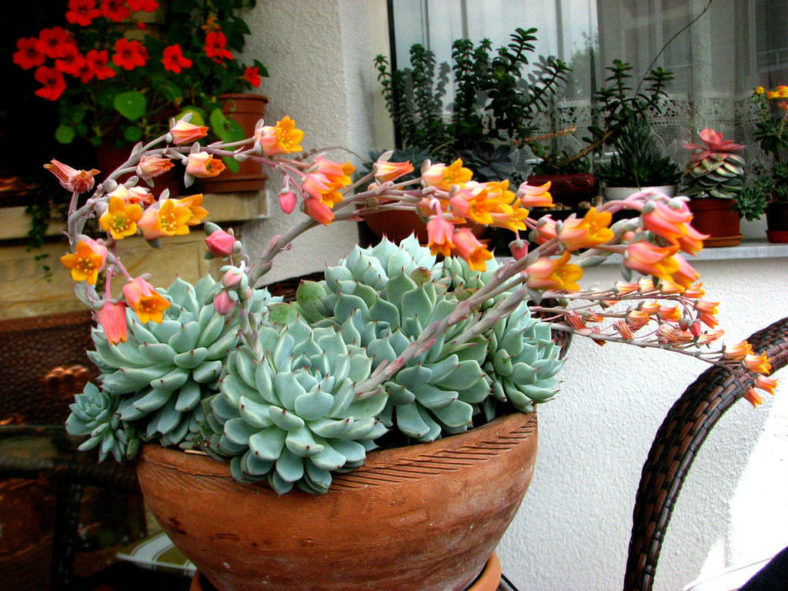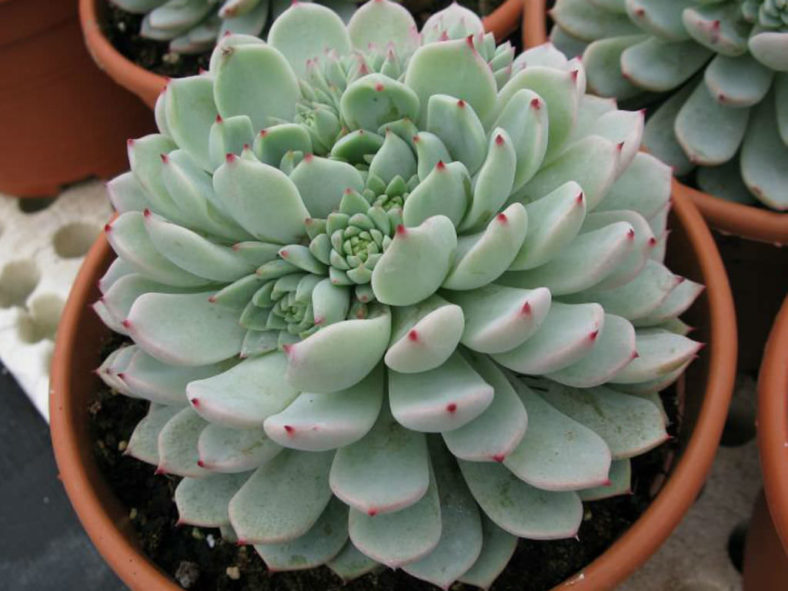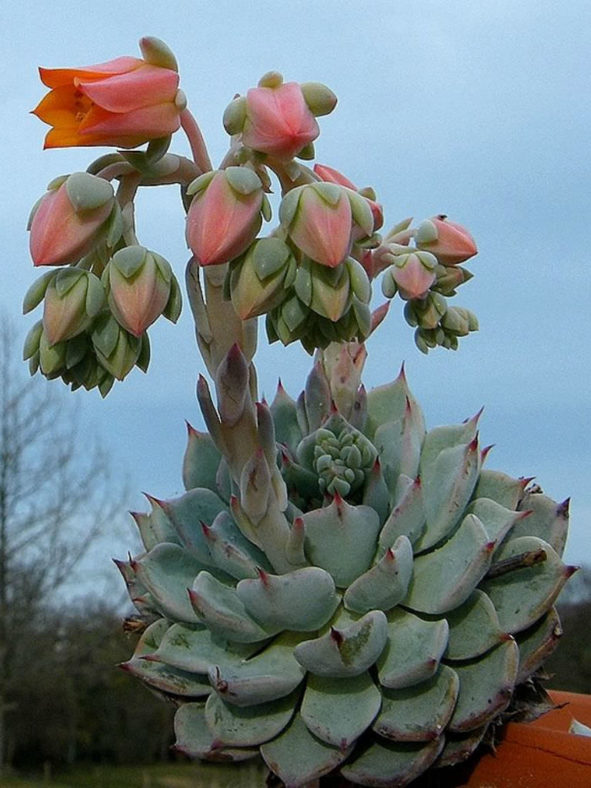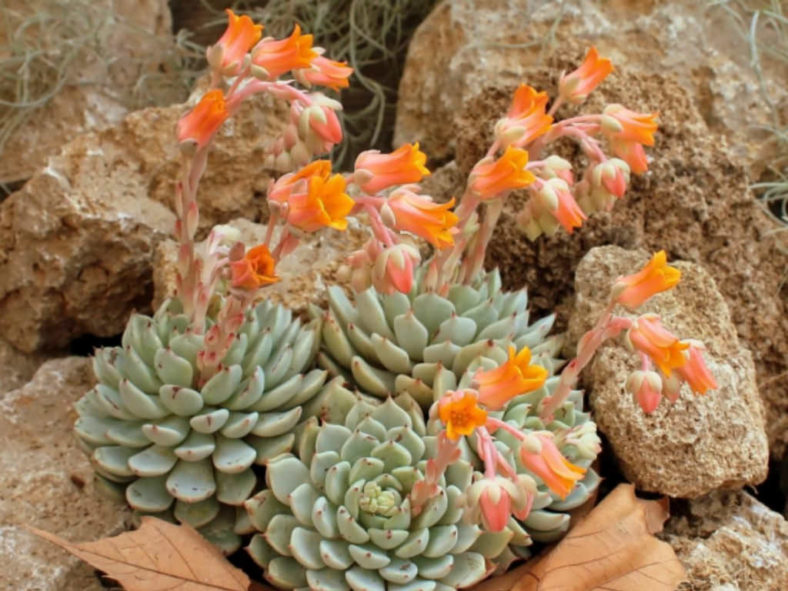Scientific Name
Echeveria 'Nobaranosei'
Synonym(s)
Echeveria 'Alienor'
As the name Echeveria 'Nobaranosei' was published in Japan around the time the hybrid was created, this name has priority, and Echeveria 'Alienor' is a synonym.
Scientific Classification
Family: Crassulaceae
Subfamily: Sempervivoideae
Tribe: Sedeae
Genus: Echeveria
Origin
Echeveria 'Nobaranosei' is a hybrid created by Mr. Negishi around 1990. It results from a cross between Echeveria spec. nov. Zaragoza (not quite identical with Echeveria cuspidata var. zaragozae) and Echeveria derenbergii.
Description
Echeveria 'Nobaranosei', also known as Echeveria 'Alienor', is an attractive succulent that forms short-stemmed rosettes of green but strongly pruinose leaves with slightly reddish margins at the apex. The stem can grow up to 5.4 inches (12 cm) long and 0.5 inches (1.2 cm) in diameter, branching and forming new terminal rosettes that can reach a diameter of 2.8 inches (7 cm). The leaves can measure up to 1.8 inches (4.5 cm) long and 0.6 inches (1.5 cm) wide.
In early spring and sometimes until summer, Echeveria 'Nobaranosei' produces bell-shaped flowers on leafy inflorescences that can grow up to 8 inches (20 cm) long. The flowers are yellow with an orange hue, pinkish or reddish outside, and imperial yellow inside.

Hardiness
USDA hardiness zones 9b to 11b: from 25 °F (−3.9 °C) to 50 °F (+10 °C).
How to Grow and Care
Most common Echeveria species are not complicated succulents to grow, provided you follow a few basic rules. First, be careful never to let water sit in the rosette, as it can cause rot or fungal diseases that will kill the plant. Additionally, remove dead leaves from the bottom of the plant as it grows. These dead leaves provide a haven for pests, and Echeverias are susceptible to mealy bugs. Finally, as with all succulents, careful watering habits and plenty of light will help ensure success.
Repot as needed, preferably during the warm season. To repot a succulent, ensure the soil is dry before repotting, then gently remove the pot. Knock away the old soil from the roots, removing any rotted or dead roots. Treat any cuts with a fungicide.
Most Echeverias can be easily propagated from leaf cuttings, although some are better propagated from seeds or stem cuttings. To propagate a leaf cutting, place the individual leaf in potting soil for succulents and cover the dish until the new plant sprouts.
Learn more at How to Grow and Care for Echeveria.
Links
- Back to genus Echeveria
- Succupedia: Browse succulents by Scientific Name, Common Name, Genus, Family, USDA Hardiness Zone, Origin, or cacti by Genus
Photo Gallery
Click on a photo to see a larger version.


